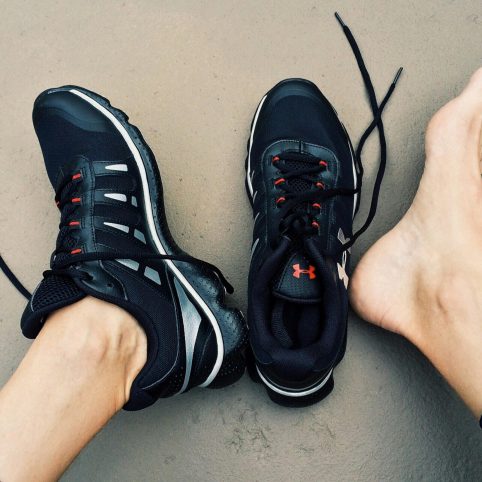Ankle pain caused by ankle bleeds or strains is one of the most common complaints in bleeding disorders, particularly in the second decade of life. It is important to distinguish the reason for the pain in the ankle.
The ankle joint is made up of the tibia and fibula (shin bones) and the talus and calcaneus (foot bones). Muscles and ligaments attach the bones together providing structural stability. The ligaments on the outside of the ankle are most commonly injured (torn or sprained). These structures all have a blood supply, and injury to them may cause bleeding into the joint.
Ankle Bleeds
An ankle bleed is blood within the joint space of the ankle with any injury to the ankle, which may be very minor. You may even have trouble identifying how you did it. These are associated with the haemophilia population only.
Ankle sprains
Ankle sprains are common in both the general and haemophilia population. They can result in bruising, swelling and damage to the ligaments and joint surfaces. An ankle sprain may result in a joint bleed.
There are three grades of ankle sprains:
Mild: Minor tear and stretch of the ligaments. Mild swelling, locally tender and little loss of function.
Moderate: Moderate, partial tears with swelling, bruising and tenderness over a wide area.
Severe: Complete tear of the ligament. Substantial bruising and swelling up the leg and into the foot. There is marked loss of movement and function. Joint stability compromised. A bony chip may become detached where the ligament attaches to the shin bone.
Physiotherapy is usually necessary with these injuries: examination, treatment and recovery are dependent on the type of injury, number of sprains and your bleeding history. In people with haemophilia, an ankle sprain must be treated very seriously. If it is not rehabilitated fully it may become more prone to re-injury and become a target joint, where there are repeated bleeds into the ankle, with little provocation or injury.
Initial treatment of a sprain
Immediate treatment ensures the ankle ligaments and soft tissues heal well and more quickly. It attempts to minimize swelling, reducing the time of exposure of the joint to blood and reducing joint damage.
Initial treatment: R.I.C.E. (REST, ICE, COMPRESSION, ELEVATION)
Factor should be administered as soon as possible and injuries of this nature should be reported to the haemophilia treatment centre.
Rest: Crutches and a splint are necessary for 48 hours for haemophilia patients
Ice: Cold in the form of crushed ice, frozen peas or cold packs should be applied to the ankle and lower calf immediately. To prevent ice burns the chosen products should be wrapped in a damp towel.
Compression: A supportive bandage should be applied from the toes up the leg to just below the knee in addition to using a splint. This should be worn continuously except when in bed at night. Often, a physiotherapist will make a splint to keep the ankle joint and calf in a good position.
Elevation: The leg should be elevated above the level of the hip when sitting, and above the heart when lying. The knee should be straight not bent when lying; a bent knee leads to a tight calf and longer rehabilitation.
Further treatment
Physiotherapy: Physiotherapy is likely to be recommended depending on the severity of the injury.
Exercises: Exercises may be commenced safely when bleeding has stopped and the ankle is able to move without pain. There should be no increased pain or swelling after exercise.
Reducing the risk of recurrent ankle sprains
There is a risk of repeated ankle sprains within the first 12 months of any ankle sprain. Muscles need to be rehabilitated to become strong, quick and efficient. It is essential to build up endurance to be pain free and protect from future sprains.
Before returning to any sport you should have:
- No pain or swelling
- Should be able to work normally
- Should be able to rise up and down to your toes
It is essential that you contact your physiotherapist at your haemophilia treatment centre for assessment and advice after any ankle injury or bleed.
